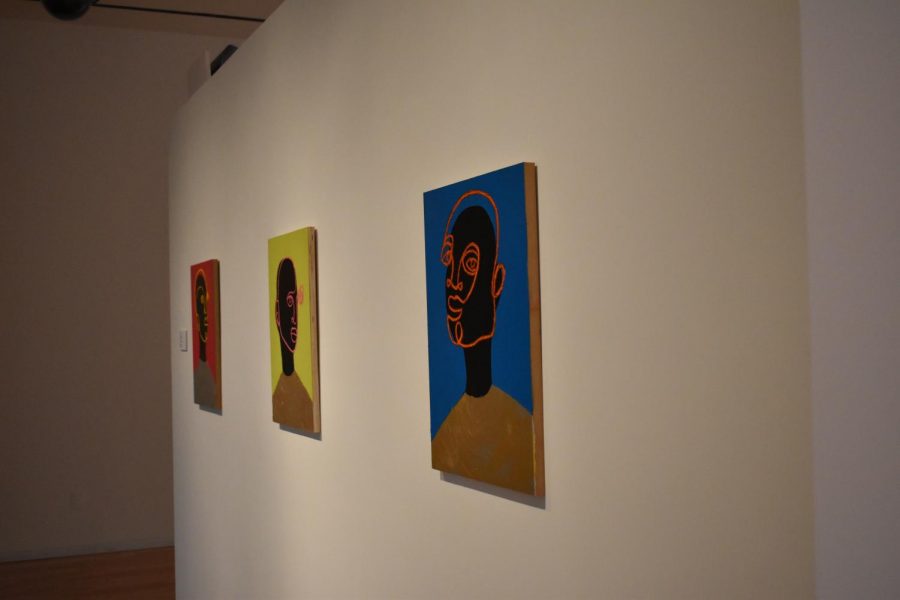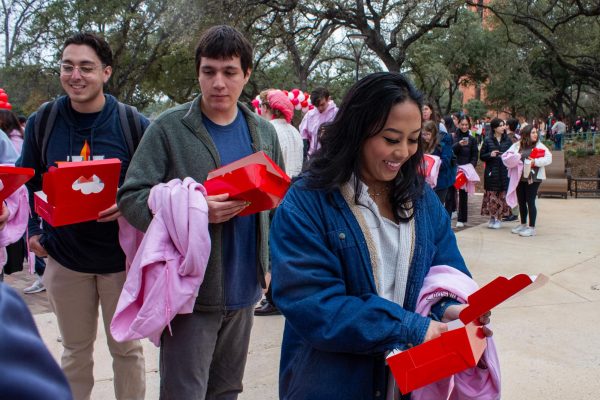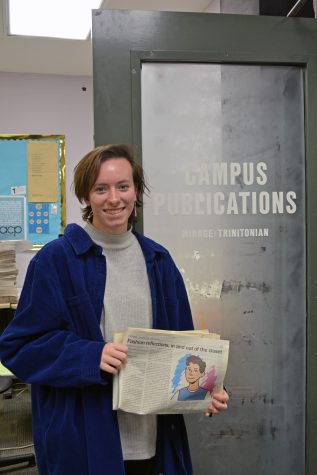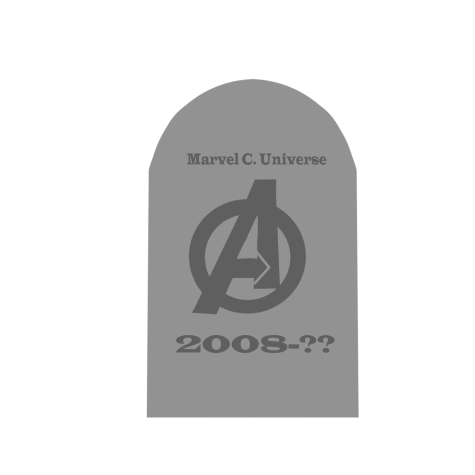Support student artists — you have the chance (on campus) now until March 26
Art from The Mini exhibit
THE MINI: Spring ’21 is currently on display in the Neidorff Art Gallery until March 26, 2021. The exhibition displays the work of Trinity University students Kate Nuelle, Bella Peters, Ángela García and Denise Turati.
Working with Photoshop and After Effects, Kate Nuelle, senior art and art history major and photographer and illustrator for the Trinitonian, created two animations for the exhibition along with a digital-image photo illustration. Nuelle’s animations deal with concepts of technology corporations, digital privacy, media and web culture — issues that have come out of hiding and have been magnified since the COVID-19 pandemic hit.
Nuelle explained to me in an email interview the impact that COVID-19 has had on her artistic practice.
“Having to leave campus and not having a studio space as a result has pushed me to embrace digital mediums even further than I had normally. In terms of subject matter, social distancing protocols have made everyone even more reliant on technology, which connects to the themes of my work, but I had made some works about the impact of digital technologies before March,” Nuelle said.
A series of five drawings and a series of three sculptures by senior Bella Peters, senior psychology and studio art double major with an ALE minor, are also on display in the exhibition.
Peters explained to me in an email interview that her drawings and sculptures deal with the concept of social masking in the sense of performance, but also in the more literal sense of wearing a mask in social spaces during COVID-19.
“In high school I was often told to ‘take off my mask and be true to who I was,’ but every teacher and motivational speaker seemed to ignore what the social masks did for people,” Peters said.
Peters’ work confronts the positive and negative aspects of social masks. The drawings were inspired by statements from anonymous individuals testifying to how they view and wear social masks.
Peters’ work pointed a finger right back at me and made me ponder introspectively about how and why I wear social masks; a moment of reflection and self-awareness was just one of the effects that Peters’ work had on me.
Moving from Nuelle’s work to Peters’ work, I couldn’t help but think about social masking through social media platforms; this is only one of the connections and big ideas that can be drawn from the work in the mini art exhibition. Artists’ intentions are definitely important; it is also important to realize your own reactions and ideas brought up by viewing art. This exhibition has the potential to kickstart big dialogues on big concepts and issues.
Ángela García, senior art history major, explained to me in an email interview that her analog collage work in this exhibition confronts larger problems that sometimes seem ungraspable and unfixable.
“The overall theme of these works is understanding, challenging, and exposing the realities of immigration, COVID-19, sexism, femininity, racism, climate change and governmental negligence. Although the dominant sentiment may seem disdainful or pejorative, the main goal of the work is to take these difficult topics and make them more accessible and digestible for my viewing audience, while also pushing them to take action,” García said.
García’s collages are very detail-oriented. García plans to go to architecture school in Fall 2022.
“I hope that those who view my works in the gallery feel inspired to create art of their own, to tackle problems in their own communities, and to never forget that a better future is always possible,” García said.
When I visited the exhibition, I was lucky enough to catch student artist Denise Turati, junior art major concentrating on graphic design with a minor in new media and communications. I spent some time talking with her about her work, which concerns gender, race, and the importance and nuances of one’s inner self.
Turati’s androgynous silhouette works are simplified to lines, shapes and complementary colors. Turati explained that it was important for us to look inward — both in terms of ourselves and how we interact with others. The ambiguous silhouettes allow the viewer to assign an imagined identity to each image.
The ambiguity in forms and identity reminded me about the importance of holding off on assumptions based on appearances and getting to know one’s inner self.
Benjamin McVey, Neidorff Art Gallery manager, gave an update on where the exhibition can be viewed.
“As for now, the exhibition solely exists in the Neidorff Art Gallery on campus. I will post images from the exhibition and artist highlights to our social media outlets Instagram (@neidorffgallery) and Facebook throughout the run-time of the exhibition,” McVey said.
Due to campus COVID-19 restrictions, the gallery is only open to those persons who are authorized to be on campus during the pandemic. Gallery hours are Monday-Friday, 1-5 p.m. and by appointment only.
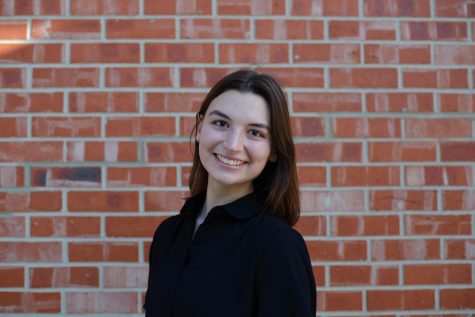
My name is Ashley Allen and I am a senior completing a BA in art history at Trinity University, with a minor in Medieval and renaissance Studies. I hope...
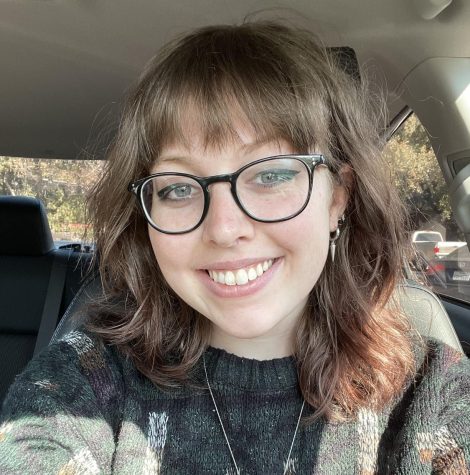
My name is Claire Sammons and I am an Anthropology and Communications double major. I have worked for the Trinitonian since fall of 2020. I became a photographer...

